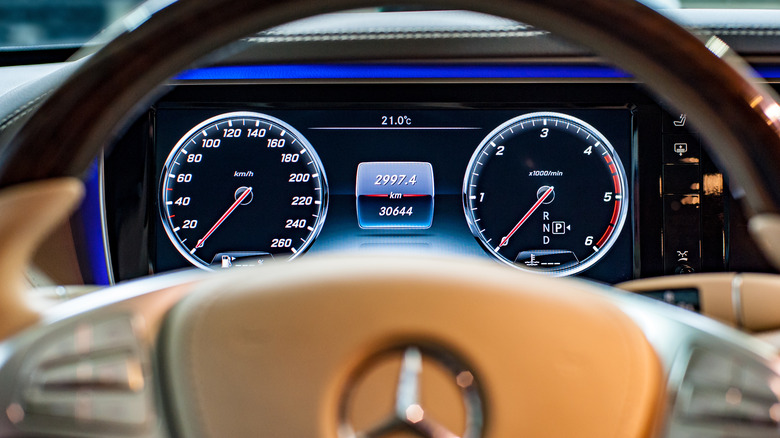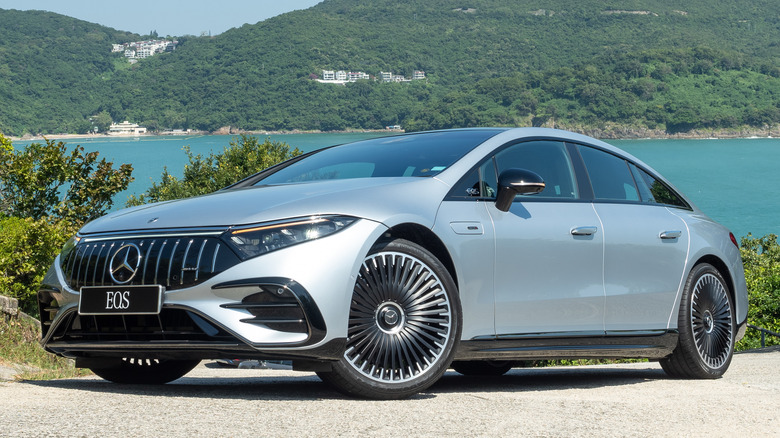Mercedes' Impressive Self-Driving Car Tech Just Got The Green Light In A Second U.S. State
Rather than taking the world by storm as many enthusiasts predicted, self-driving technology is being introduced to the market much more gradually. Considering how important it is for autonomous vehicles on the road to be safe for both people inside and outside of the car, this cautious approach is a sound one. With the announcement that it's bringing its impressive self-driving tech to a second U.S. state following its approval in Nevada, Mercedes just pushed autonomous driving forward another significant step.
Mercedes first received government approval to use its Drive Pilot system earlier this year from Nevada. However, the second state to allow Mercedes' self-driving tech on its streets is one with a much larger population: California. This could potentially mean a huge increase in the amount of autonomous vehicles sharing the road.
The German automaker previously received approval to use the technology in its home country, and has been approaching American roads one state at a time, seeking official approval even if restrictions aren't necessarily in place. Presumably this is to avoid any potential lawsuits or expensive vehicles unable to be sold once produced.
California is a massive state with millions of drivers, but self-driving technology still has a long way to go before becoming anywhere close to legal in all 50 U.S. states. However, Mercedes' approach may go a long way in helping bring autonomous vehicles to the road — thanks to its innovative Drive Pilot tech, and the rules it will have to follow within California's borders.
It's not fully autonomous, but still impressive
The Mercedes' Drive Pilot system being introduced to California is considered Level 3 autonomy (of six levels). It allows for hands-free, eyes-free driving under certain conditions, meaning a vehicle can fully function without a driver, to some extent. However, it is not the same as a fully autonomous car that can get you anywhere with no restrictions, or without a driver needing to be present.
Drive Pilot is still extremely impressive, however. It uses a combination of sensors such as LiDAR (Light Detection and Ranging) tech to read and navigate through its environment. However, the Level 3 technology requires a driver at the wheel who can take over at a moment's notice.
While the driver can spend much of a trip with their eyes off the road, they're still needed in case the vehicle needs a human to take control. Drive Pilot is unique in that it requires a driver to manually control the vehicle before transitioning from Level 3 to Level 2.
This level of autonomy is due in part to the restrictions Mercedes' self-driving vehicles will have on the road, including a 40 mph speed limit, even on highways. The Level 3 system can also only be used on pre-mapped roads, and won't operate in construction zones or poor weather. Additionally, it's mandatory for drivers using the system to watch a video that educates them on Drive Pilot and how to use it. While this isn't the Level 6 self-driving future, it's an effective step towards that end.

